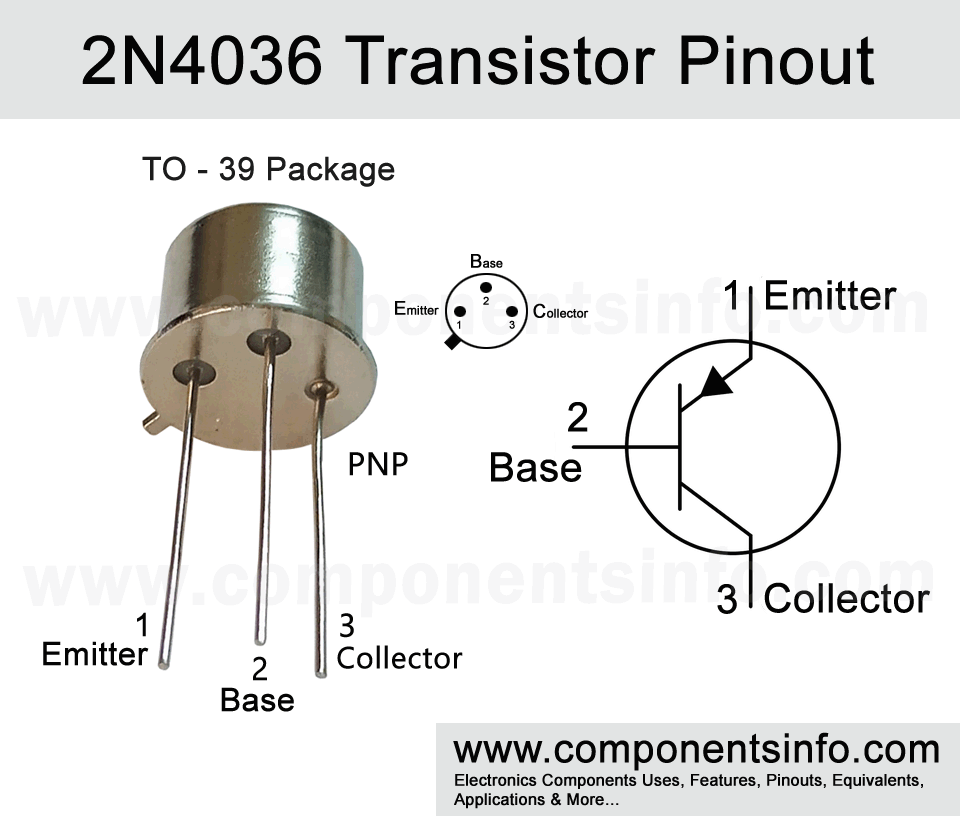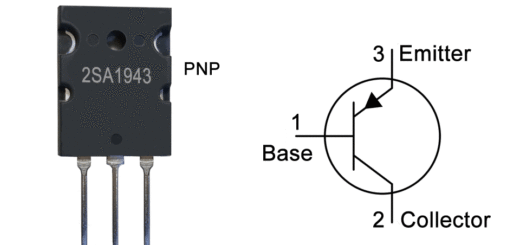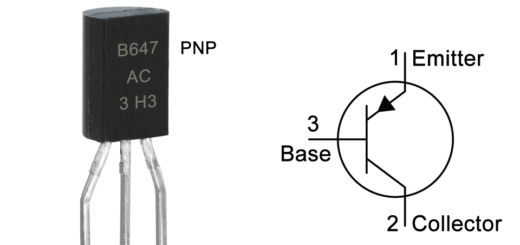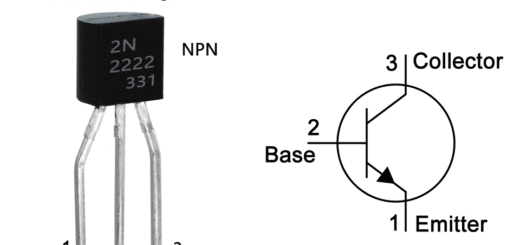2N4036 Transistor Pinout, Applications, Equivalents, Features, How and Where to Use It
2N4036 is a PNP TO-39 metal can package transistor designed to be used in general purpose applications. This article describes 2N4036 transistor pinout, applications, equivalents, features, how and where to use it and other information about this transistor.
Features / Technical Specifications:
- Package Type: TO-39
- Transistor Type: PNP
- Max Collector Current(IC): -1A
- Max Collector-Emitter Voltage (VCEO): -65V
- Max Collector-Base Voltage (VCBO): -90V
- Max Emitter-Base Voltage (VEBO): -7V
- Total Power Dissipation (PD): 7W
- Max Transition Frequency (fT): 60 MHz
- Minimum & Maximum DC Current Gain (hFE): 20 to 200
- Max Storage, Operating & Junction temperature range: -65 °C to +200 °C
Replacement and Equivalent:
2N4314, 2N5680, 2N5323, 2N4236, BLX41. The Nearest possible replacement is 2N4037.
2N4036 Transistor Explained / Description:
If you are looking for a general purpose transistor with high operating temperature capability and -1A collector current then 2N4036 can be a good choice. It is a PNP transistor and available in TO-39 metal can package. It is designed to be used in general purpose applications such as for switching and amplification which makes it suitable for a wide variety of applications.
Looking at the absolute maximum ratings of the transistor, the max collector to emitter voltage is -65V, max collector to base voltage is -90V, max collector current is -1A, max emitter to base voltage is -7V, max base current is 0.5A, total power dissipation is 7W and operating ambient temperature is -55 °C to +200 °C.
Now looking at some of the electrical characteristics of the transistor, the DC current gain is 20 to 200, collector to emitter saturation voltage is only -650mV, collector capacitance is 30pF and transition frequency is 60MHz.
Where We Can Use it & How to Use:
2N4036 transistor has variety of general purpose uses. Such as amplifiers, oscillators, controllers, signal processing, etc. Regarding to the using procedure of the transistor it is a BJT transistor so the using procedure is the same as we use any other BJT transistor. For instance, its emitter will be connected with the negative supply base will be connected with the input, and collector will be connected with one side of the load and the other side of the load should be connected with the positive supply.
Applications:
Signal Conditioning Circuits
Radio and RF Applications
General purpose amplifiers
Radio and RF Applications
Oscillator Circuits
LED Driver Circuits
Switching and Driving Loads
Audio amplifier and other audio related applications
Any general purpose applications that fall under its ratings
How to Safely Long Run in a Circuit:
Here are some safe operating guidelines for using the transistor.
- First of all, do not use the transistor to its absolute maximum ratings and stay at least 20% below.
- So the maximum collector current of the transistor is -1A and according to the 20% rule, the derived load should be under 0.8A.
- Max collector to emitter voltage is -65V so the derived load should be under -52V.
- Max power dissipation should be under 7W.
- Always use a heatsink with the transistor.
.
Datasheet:
To download the datasheet just copy and paste the below link in your browser.
https://z3d9b7u8.stackpathcdn.com/pdf-down/2/N/4/2N4036_PhilipsSemiconductors.pdf



